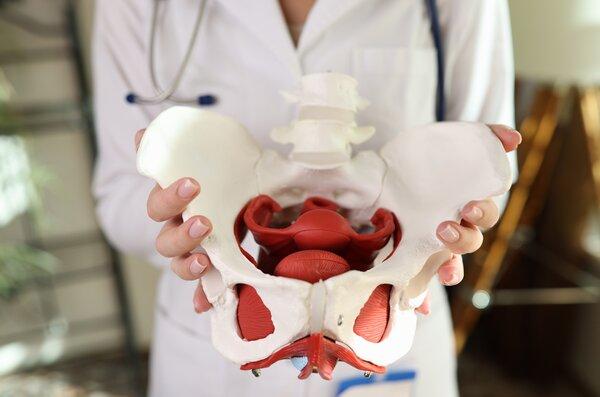
(Note: Some of the links in this post are affiliate links, and we will be compensated when you make a purchase by clicking through our links at no additional cost to you.)
Unlocking the Secrets: How to Know if Your Pelvic Floor is Weak
Your body is a marvelous creation, and it often communicates with you in subtle ways. One area that might be sending you signals is your pelvic floor. A weak pelvic floor can have significant implications for your health and well-being. In this comprehensive guide, we’ll delve into the signs that indicate if your pelvic floor is indeed trying to tell you something.
Understanding the Pelvic Floor
Before diving into the signs of a weak pelvic floor, let’s get acquainted with what the pelvic floor actually is. Imagine it as a hammock of muscles stretching across the base of your pelvis, supporting your bladder, bowel, and uterus (for the ladies). These muscles play a crucial role in maintaining continence, supporting your pelvic organs, and even contributing to sexual function.
Signs and Symptoms Of A Weak Pelvic Floor
1) Urinary leakage when coughing, sneezing, laughing, or running:
One of the primary indicators of a weakened pelvic floor is urinary incontinence. If you find yourself leaking urine during activities like coughing, sneezing, laughing, or running, it may be a sign that your pelvic floor muscles are not providing adequate support to your bladder.
This symptom, known as stress incontinence, occurs when the pressure inside your abdomen increases, putting extra stress on your bladder. The weakened pelvic floor muscles are unable to counteract this pressure, leading to urine leakage.
>>> No More Leaks: Must-Read Urinary Incontinence Books
2) Failing To Reach The Toilet In Time:
Another red flag for pelvic floor weakness is the inability to reach the toilet in time. If you frequently experience a sense of urgency and struggle to control your bladder, it may be due to weakened pelvic floor muscles.
The pelvic floor plays a crucial role in maintaining bladder control. When these muscles are weakened, it becomes challenging to hold urine, leading to a constant rush to the restroom.
3) Involuntary gas release from either the anus or vagina when bending over or lifting:
Embarrassing as it may be, passing wind from either the anus or vagina during activities like bending over or lifting can indicate pelvic floor weakness. This symptom, known as flatus incontinence, occurs when the pelvic floor muscles are unable to control the release of gas.
The pelvic floor muscles act as a supportive hammock for the pelvic organs, including the rectum. When these muscles are weakened, they may struggle to maintain proper control, resulting in unintentional gas release.
4) Loss of Bowel Control:
Fecal incontinence, or the inability to control bowel movements, is a severe sign of pelvic floor weakness. If you find yourself experiencing unexpected bowel leaks or have difficulty controlling gas or stool, it’s essential to consider the health of your pelvic floor muscles.
The pelvic floor provides support to the rectum and anal sphincters, crucial for maintaining bowel control. When these muscles are weakened, fecal incontinence can occur, impacting both physical and emotional well-being.
5) Pelvic Organ Prolapse:
Pelvic organ prolapse is a condition where the pelvic organs, such as the bladder, uterus, or rectum, descend into the vaginal space due to weakened pelvic floor support. This can lead to a feeling of pressure or fullness in the pelvic region.
Common symptoms of pelvic organ prolapse include a bulging sensation, discomfort, or pain in the pelvic area. If you notice a visible or internal bulge, it’s crucial to consult with a healthcare professional to assess the severity of the prolapse and explore treatment options.
6) Discomfort or Pain During Intercourse:
Pelvic floor weakness can also contribute to painful intercourse. The pelvic floor muscles are involved in sexual function, and when they are weak, it can lead to discomfort or pain during penetration.
If you experience pain during sex, it’s essential to consider the health of your pelvic floor. Consulting with a healthcare provider or pelvic floor therapist can help identify the underlying issues and guide you toward appropriate interventions.
7) Vaginal flatulence (queefing):
While vaginal flatulence, also known as queefing, is a natural occurrence and not always a cause for concern, persistent or excessive queefing may indicate weakened pelvic floor muscles. The pelvic floor helps control the opening and closing of the vagina, and when these muscles are weakened, air can enter and exit more freely, leading to queefing.
If you notice a sudden increase in queefing or are concerned about its frequency, it’s advisable to seek guidance from a healthcare professional to evaluate the condition of your pelvic floor.
8) Increased Frequency To Void:
If you find yourself constantly needing to use the bathroom, it could be a sign of pelvic floor weakness. The pelvic floor muscles play a role in maintaining bladder control and supporting the organs in the pelvic region.
When these muscles are weakened, you may experience an increased frequency of urination, disrupting your daily activities and sleep patterns. Addressing pelvic floor weakness can help improve bladder function and reduce the urgency to use the restroom.
9) Incomplete Emptying:
Difficulty emptying your bladder or bowel completely can also be a red flag. If you constantly feel like there’s more to release, it could be due to weakened pelvic floor muscles.
Who’s at Risk?
Certain factors increase the likelihood of developing a weak pelvic floor:
Pregnancy and Childbirth:
The miracle of life can take a toll on your pelvic floor. Pregnancy and childbirth, especially multiple births, can stretch and weaken these muscles.

Aging:
Like many things, our pelvic floor muscles lose strength and elasticity as we age. Hormonal changes in women during menopause can further exacerbate the issue.
Heavy Lifting:
Regularly engaging in heavy lifting without proper technique and support can strain your pelvic floor muscles.
Chronic Constipation:
Straining during bowel movements, often caused by chronic constipation, can weaken the pelvic floor over time.
DIY Pelvic Floor Check
Now that you know what to look out for let’s explore a simple test to assess the strength of your pelvic floor:
The Kegel Test:
Sit comfortably and squeeze your pelvic floor muscles as if you’re trying to stop the flow of urine. Hold for a count of five, then release for five. Repeat this process 10 times. If you find it challenging to complete this exercise or experience discomfort, it might be an indication of a weak pelvic floor.
Seeking Professional Help
If you suspect your pelvic floor might be weak, it’s crucial to consult with a healthcare professional. They can perform a thorough examination and, if necessary, recommend specialized tests to assess the strength and functionality of your pelvic floor muscles.
Strengthening Your Pelvic Floor
The good news is that a weak pelvic floor can often be improved with targeted exercises. pelvic floor strengthening exercises, pelvic floor physical therapy, and yoga are all excellent options to enhance pelvic floor strength. However, it’s essential to perform these exercises correctly, so seeking guidance from a healthcare professional like a pelvic floor physical therapist is advisable.
Empowering Yourself for Better Pelvic Health
Your pelvic floor is a powerhouse that deserves attention and care. Understanding the signs of a weak pelvic floor is the first step towards a healthier, more empowered you. Don’t shy away from addressing these issues—seek professional guidance, incorporate pelvic floor exercises into your routine, and take charge of your pelvic health. After all, a strong pelvic floor lays the foundation for a more confident and comfortable life.








